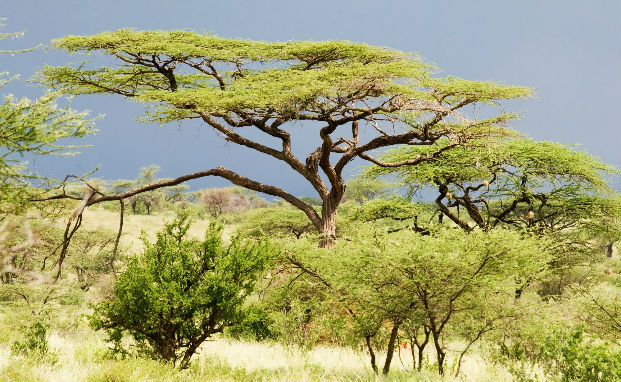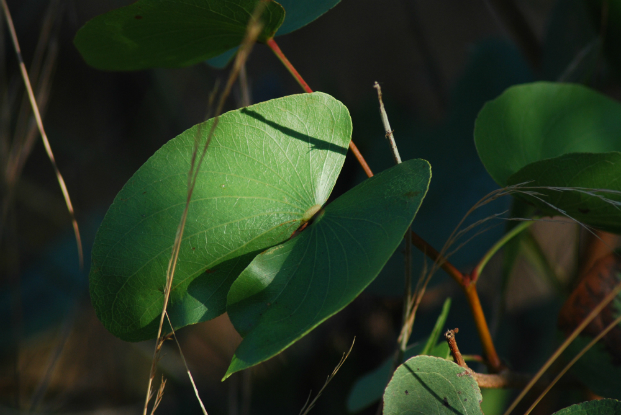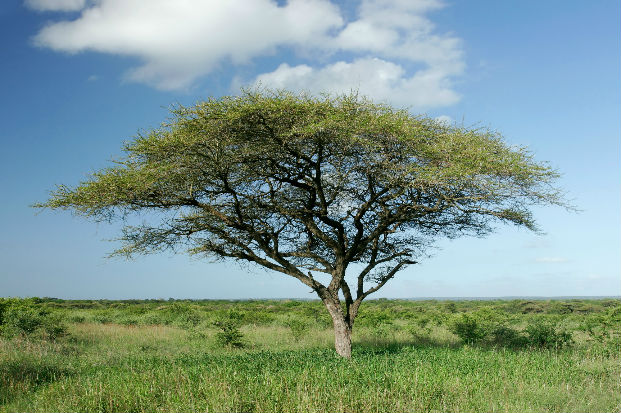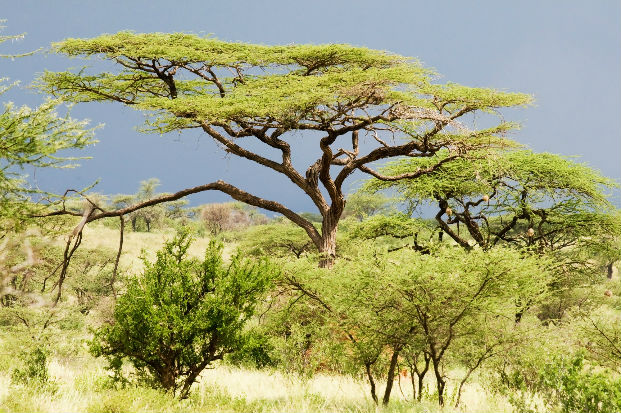
A small to medium sized slow growing tree with an umbrella shaped canopy. It has both straight and hooked thorns to help protect its highly nutritious leaves and pods from herbivores. These drought resistant trees occur in deciduous woodland, bushveld and grassveld.
7 facts about the umbrella thorn (Acacia tortilis Subspecies heteracantha)
1. A chemical prevents its own saplings competing for resources
Like other acacia trees the umbrella thorn practices allelopathy, a process where the tree releases a chemical into the soil which prevents even its own saplings from growing and therefore reduces competition for resources.
2. Umbrella thorn roots
The roots of the umbrella thorn are used to make spear shafts, fishing spears and frameworks for temporary shelters.
3. Mabungu grubs
Umbrella thorn trees are often infested by mabungu grubs, the larvae of the longhorn beetle (Cerambycidae). The grubs are high in protein and fried as a delicacy.
4. Straight and hooked thorns
The Afrikaans name for the umbrella thorn is Hook-en-steek which translates as “hook and prick” due to the tree possessing both straight and hooked thorns.
5. Stock fencing
The thorny branches of the umbrella thorn are used to make temporary enclosures to keep livestock in and wild animals out.
6. Umbrella thorn gum
The gum of the umbrella thorn which is rich in carbohydrate is eaten by lesser bushbabies, vervet monkeys and baboons.
7. Contorted seed pods
The species name, tortilis, refers to the contorted and twisted pods and heteracantha means “different thorns” due to the umbrella thorn possessing both straight and hooked thorns.
Related posts
There are plenty more trees to explore on Fascinating Africa, but if you only have time to check one out visit the mopane page to discover 8 fun facts, my favourite is:
To conserve water on hot or windy days the 2 sides of the mopane leaf will limit evaporation by folding together and thus reducing the surface area that is exposed.
Vote for the fact you find most fascinating
The species name, tortilis, refers to the contorted and twisted pods and heteracantha means “different thorns” due to the umbrella thorn possessing both straight and hooked thorns.
Like other acacia trees the umbrella thorn practices allelopathy, a process where the tree releases a chemical into the soil which prevents even its own saplings from growing and therefore reduces competition for resources.
Umbrella thorn trees are often infested by mabungu grubs, the larvae of the longhorn beetle (Cerambycidae). The grubs are high in protein and fried as a delicacy.
The thorny branches of the umbrella thorn are used to make temporary enclosures to keep livestock in and wild animals out.
The Afrikaans name for the umbrella thorn is Hook-en-steek which translates as “hook and prick” due to the tree possessing both straight and hooked thorns.
The roots of the umbrella thorn are used to make spear shafts, fishing spears and frameworks for temporary shelters.
The gum of the umbrella thorn which is rich in carbohydrate is eaten by lesser bushbabies, vervet monkeys and baboons.






